I continue to improve my hammock camping experience.
Last time out I was greeted by this little fellow in front of my campsite. (You can tell it’s a young gator by the yellow stripes.) Messing with the flashlight and phone camera did not seem to bother him. He stayed in the general area for a few minutes, let me take a few pictures and then slowly crawled away.
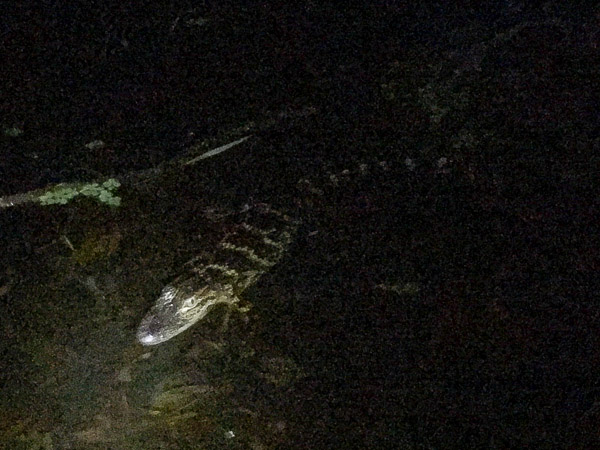
I did not spend much ($118) on my starter hammock, but I’ve come to appreciate that it is a complete system for three season camping. I did not have to spend more on separate components (i.e., net, fly, skins). Here is what it looks like when hung between two trees with the skins pulled to the center…
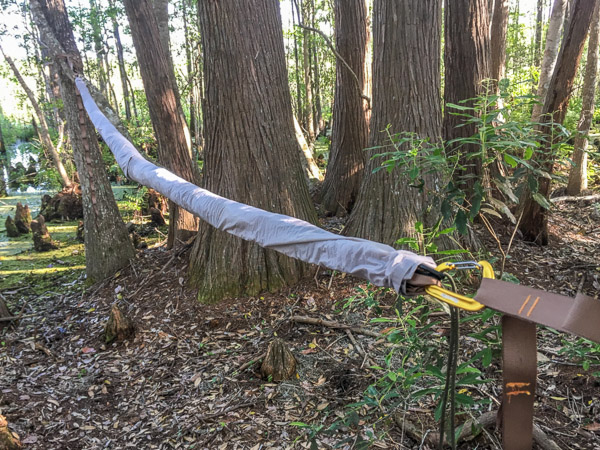
This is the head-end. Note the extra green loop [mod #1]. I added this to let the fly relax and fall to the side when not needed. It turns out that having the fly connected normally is the best way to get the correct tension (after which I slacken it). [I later learned this is because this particular hammock lacks a ridge line.] Note also that the foot is slightly higher. This was counter-intuitive for me since I like my legs lower than my head. Basically this prevents you from sliding down and getting all bunched up. It just works!
Next I turned to the bug netting. With no instructions and very little info online I had to improvise. The included cords had little slide-locks to help get the right tension. The problem was that once you got into the tent, the tension changed. So I replaced these with thin bungee cords [mod #2]…
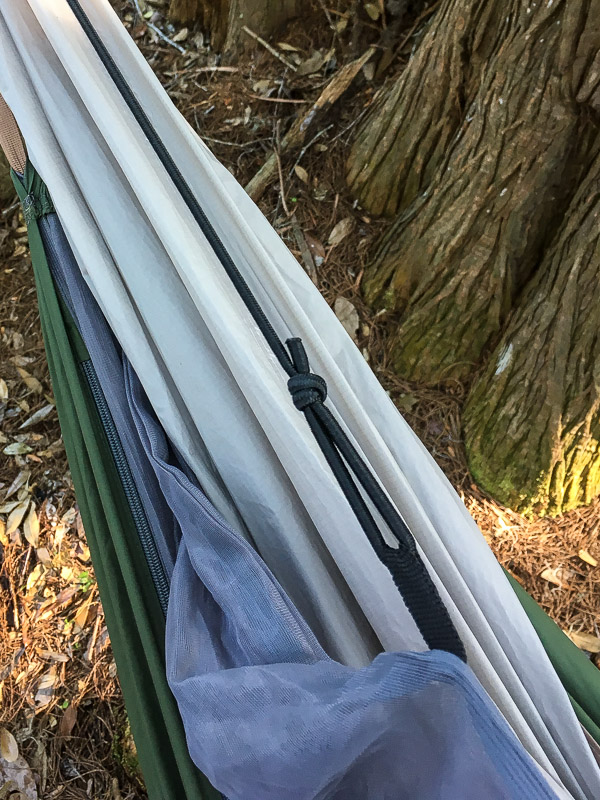
I also moved one of loops for the spreader bow (not shown). I suspect they had a quality control problem with the stitching. Here is a closeup of the head end…
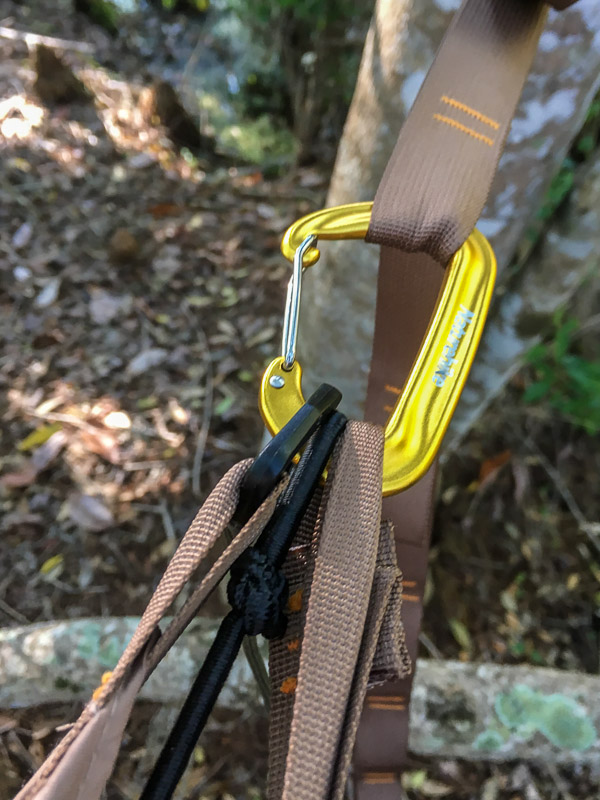
[L to R: fly, bungee, green loop (behind) and hammock]
Next I fixed an obvious flaw—not being able to reach the foot-end zipper pull. I simply replaced the short inside tab with an 18 inch cord [mod #3]…
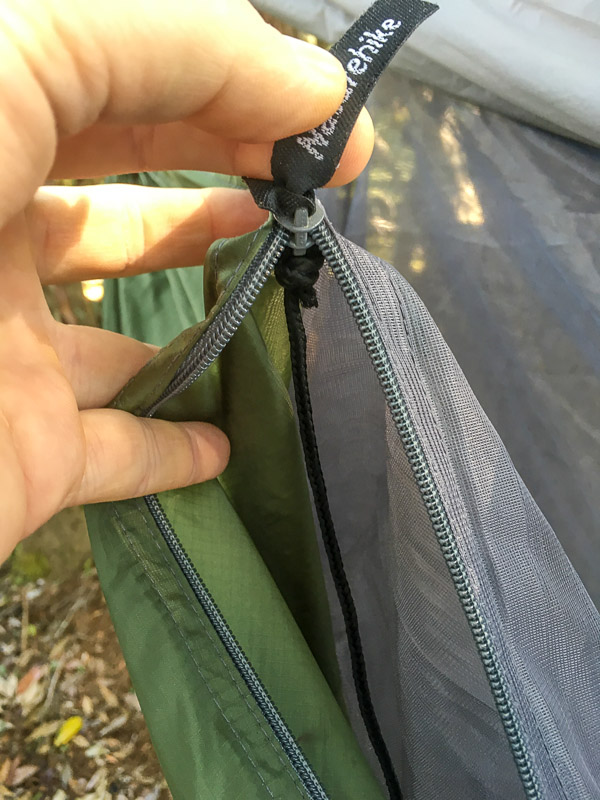
Finally I turned to the free corners of the diamond-shaped fly. It suffered the same problem as the bug net, no good way to keep the proper tension once inside the hammock. Here’s where a bit of serendipity came in. I had purchased a set of tarp tie-downs as a source for the bungee material. They came with orange knobs on them for fast tying. This turned out to be a perfect fit for the fly [mod #4]…
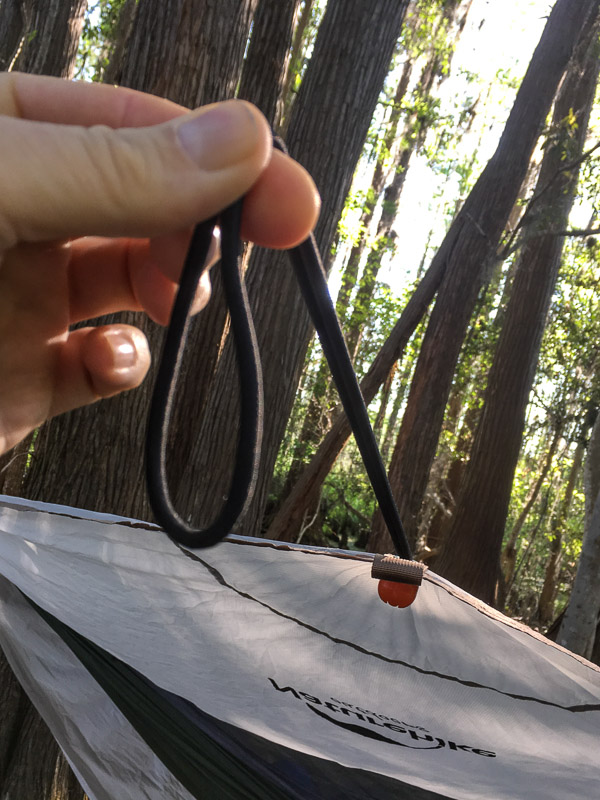
The ends can be staked down as is, or extended with the slide-lock cords and tied off to a tree or other object. This provides a nice taut fly that can recover from gusty winds. As an added benefit, when I need to fold the fly back the bungees can be hooked together on one side with minimal flapping. <smile> They also help keep the fly furled when not in use. I’m still working on the best way to do this…
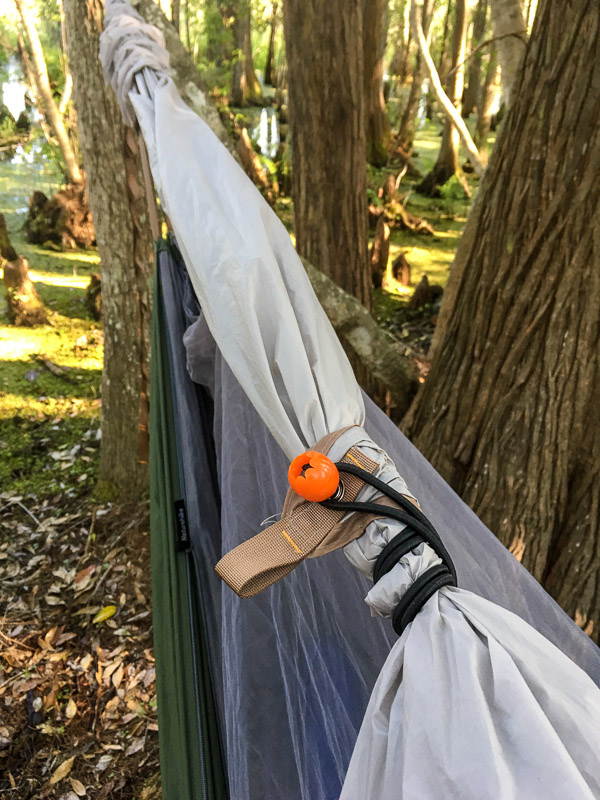
Here is the whole rig in action…

Note that the foot is higher and the fly is furled but not relaxed. My biggest problem is getting the sleeping bag arranged under me. This is non-trivial when there is no solid surface to push off!
Finally a note about the overall configuration, on most nights this hammock only needs two points of suspension. Using the fly brings that to four. One of the things I love about this type of tent is how simple it is to deploy and pack up!

Two or Four Point Suspension
Here are a few examples from Amazon.com. The number of suspension points goes from six to eight and beyond. And that’s before you add the fly!
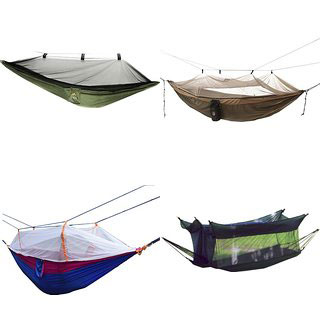
Imagine putting these up in a rain storm with bugs biting! The KISS principal at work.
